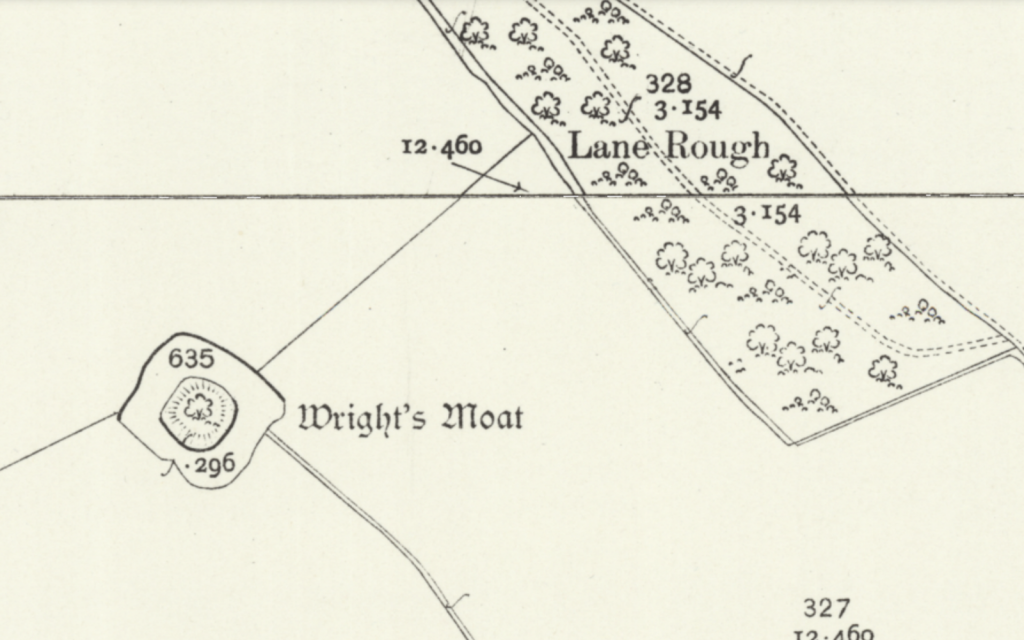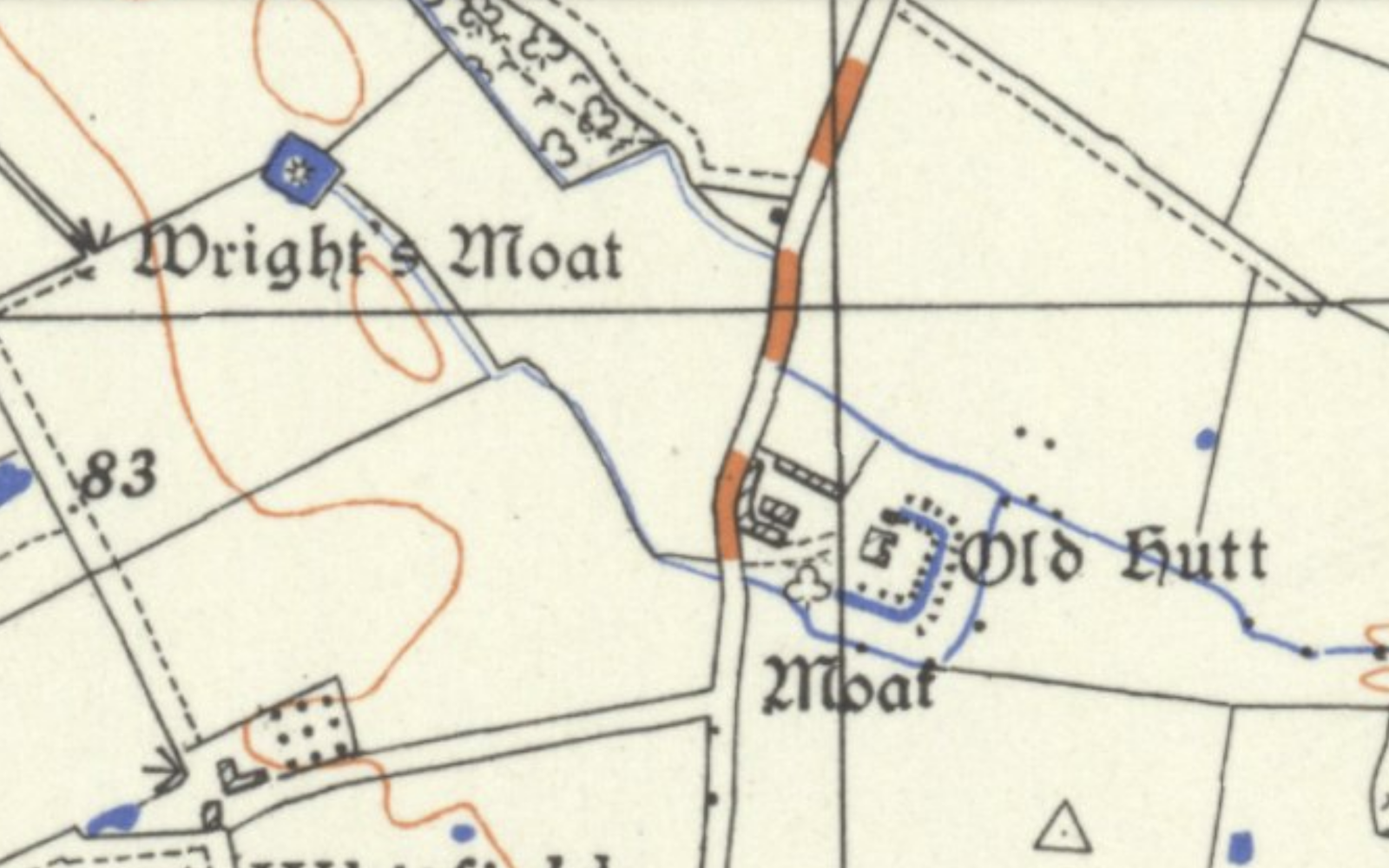Halewood was rather rural in character, before the landscape transformed it in the 20th century. Being on the edge of Liverpool contributed to the preservation of some interesting features. Two of these, once standing close to each other, were the Old Hutt and Wright’s Moat.
Wright’s Moat was a mysterious thing. It’s name comes from Thomas Wright who lived in New Hutt Farm in the 19th century (Royden, 1992). Mike Royden notes that it existed before this, though it’s name is not recorded.
The shape of Wright’s Moat
Wright’s Moat consisted of a rounded square moat surrounding an ‘island’. The old maps that show it don’t give much clue as to why it was here, except that the 1937-61 OS map (1:25000) shows that a stream ran into or out of the south east corner. The stream clinked it to the moat around Old Hutt (which was a manor house). It could have been ornamental, or something like the Duck Decoy that is still standing today a few miles away in Hale (though see below).
The excavation of Wright’s Moat in 1960 found an empty site; only one trench was excavated, aligned NE/SW (Wrathmell). The archaeologists found coal and burnt stone, and concluded that the ‘platform’ of the Moat consisted of material dug from the ditch surrounding it.
They also concluded that the evidence pointed to ‘occupation’ (i.e. some human activity taking place here); the only material remains were pieces of medieval pottery. The pottery was very poorly preserved, and they therefore suggested that the medieval period represented the main period of activity.
Finally, the archaeologists put forward the idea that this could once have been a small farmstead. The inhabitants would have abandoned it when the Ireland family took over the land, moving into the Old Hutt.

Both Wright’s Moat and the nearby Old Hutt were destroyed when the Ford car factory (now Jaguar Land Rover) was built.
Further Reading
Royden, M., 1992, Old Hutt Moated Site (http://roydenhistory.co.uk/halewood/history/oldhutt/oldhutt.htm, accessed 6th Feb 2022)
Wrathmell, S., 1987, ‘Excavation and Survey at the Old Hutt, Halewood, in 1960’, Journal of the Merseyside Archaeological Society, vol 8, p1-46 – especially Appendix A on p44 (https://www.merseysidearchsoc.com/uploads/2/7/2/9/2729758/jmas_8_paper_1.pdf, accessed 6th Feb 2022)
